The best cover letter layout this year
A cover letter layout will help you construct the perfect cover letter. Here’s how to come up with the right layout for your needs.
A cover letter layout will help you construct the perfect cover letter. Here’s how to come up with the right layout for your needs.
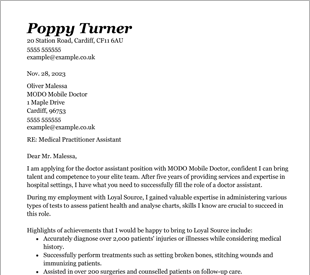
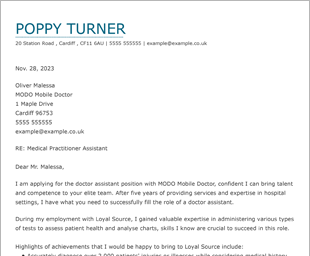
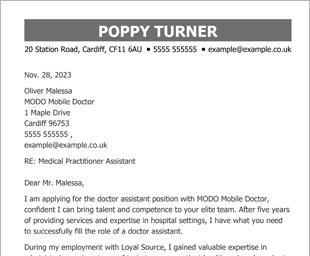
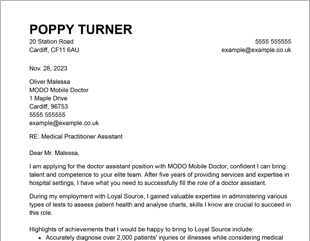
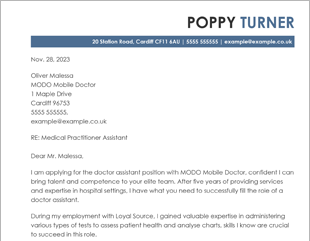
OUR USERS HAVE BEEN HIRED BY
Your cover letter layout is centred around how you present the information in the letter that accompanies your CV and job application. A cover letter that is professionally designed and organised will give you the best possible results and make a great first impression.
This layout is more common than others, partly because it is adaptable and can be tailored to suit most job seekers and job titles. Its features include:
This is the greeting you use to address the hiring manager or recipient of your cover letter. When possible, you should avoid a generic salutation like, “To whom it may concern” or “Dear hiring manager.” Instead, use the hiring manager’s name and the “Dear Mr.” or “Dear Ms.” salutation. If you cannot find the name of the hiring manager anywhere, or the letter is addressed to a panel of people, a generic salutation can be acceptable as long as it is professional in nature. Remember that your header should include your full name and contact information.
The first paragraph in any cover letter should be an introductory paragraph, no matter what layout you choose. Even a simple cover letter will have an introduction, main summary and closing statement. This section of your cover letter should give a potential employer an idea of who you are and why you want the job. If you are applying to be a flight attendant, for example, you might write: “As a flight attendant with five years of experience, I have long wanted to work for [XYZ] because of the excellent reputation the company holds within the industry. As an experienced attendant with First Aid training and excellent people skills, I know I would be an excellent addition to the [XYZ] family.” This simple introduction tells a potential employer that the job seeker has the experience, that they are familiar with the company and that they have key skills that could be useful. This sets the foundation upon which the rest of the letter can build.
The middle or second paragraph of a one-page cover letter should be devoted to giving the recruiter or hiring manager additional information that can supplement your CV. Don’t just copy and paste information from your CV; instead, provide more details on your relevant experience and skills. Use this section to talk about your achievements and give examples of your strongest skills in action. For example, a project manager might write: “While managing [ABC], I created a filing system that reduced human error by 15%.” Using active language like “created” and “managing” and providing specific examples can make your cover letter far more persuasive and increase your chances of a follow-up call or an invitation to a job interview.
The final paragraph of a good cover letter should include a call to action. Reemphasize your enthusiasm for the job opportunity and invite the hiring manager to follow up with you. This is why you provide your contact information in the header, after all. The best cover letter is one that prompts a recruiter to read your CV, helps you to stick in their mind and encourages them to invite you for an interview.
Just as it is important to start your cover letter the right way, the way you sign off is also crucial. Tie the information in your cover letter together in your third or final paragraph and end with a professional sign-off, such as “Yours sincerely” or “Best regards” Remember to use your full name, and if you are sending a CV and cover on paper, be sure to sign the cover letter by hand. As you can see, this cover letter layout is comprehensive and easy to adapt. Because it covers all of the most important bases, it gives you plenty of flexibility to create the right cover letter for their needs. It is simply a matter of adapting the layout and personalizing the contents. CVHelp can offer a professional cover letter template to get you started if you want some inspiration.
There are a number of cover letter tips that can help you make a basic cover letter template your own. Here’s how you can adapt this basic layout to give you the best cover letter and the best chance of success in your job search:
The growth of professional social media networks like LinkedIn has made it easier to keep an eye on what the top players in a field are doing. Use this to your advantage and consider the skills, certifications and achievements they highlight. If you have anything similar, you should highlight this in your cover letter.
There are many creative cover letter templates available, so don’t be afraid to switch things up. A bold design can be very helpful during a job search, especially if you work in a creative industry.
Identify areas in your CV that could be expanded upon. If you have significant achievements from a previous job, for example, or you undertook relevant extracurricular activities during a certain period of study, adding these details to your cover letter could be helpful. Just remember that the ideal cover letter length is between half a page and one page. Try to keep the body of your cover letter concise.
Generally, a cover letter can be between one-half and three-quarters of a page in length, but you can use a full page if you need to. Remember, the best cover letter is one that properly represents your skills and experience and that catches the attention of a hiring manager.
You should stick to a simple, clear and easy-to-read font, sized between 10.5 and 12 to ensure readability. The fonts you will most commonly see in cover letter samples are Sans serif fonts like Arial and Calibri. Times New Roman is also acceptable.
Unless specifically requested in physical form or as a document file, your cover letter should be submitted in PDF form. If a physical copy is requested, make sure you physically sign the letter to make a good impression on the recruiter.
We personalize your experience.
We use cookies in our website to ensure we give you the best experience, get to know our users and deliver better marketing. For this purpose, we may share the information collected with third parties. By clicking “Allow cookies” you give us your consent to use all cookies. If you prefer to manage your cookies click on the “Manage cookies” link below.